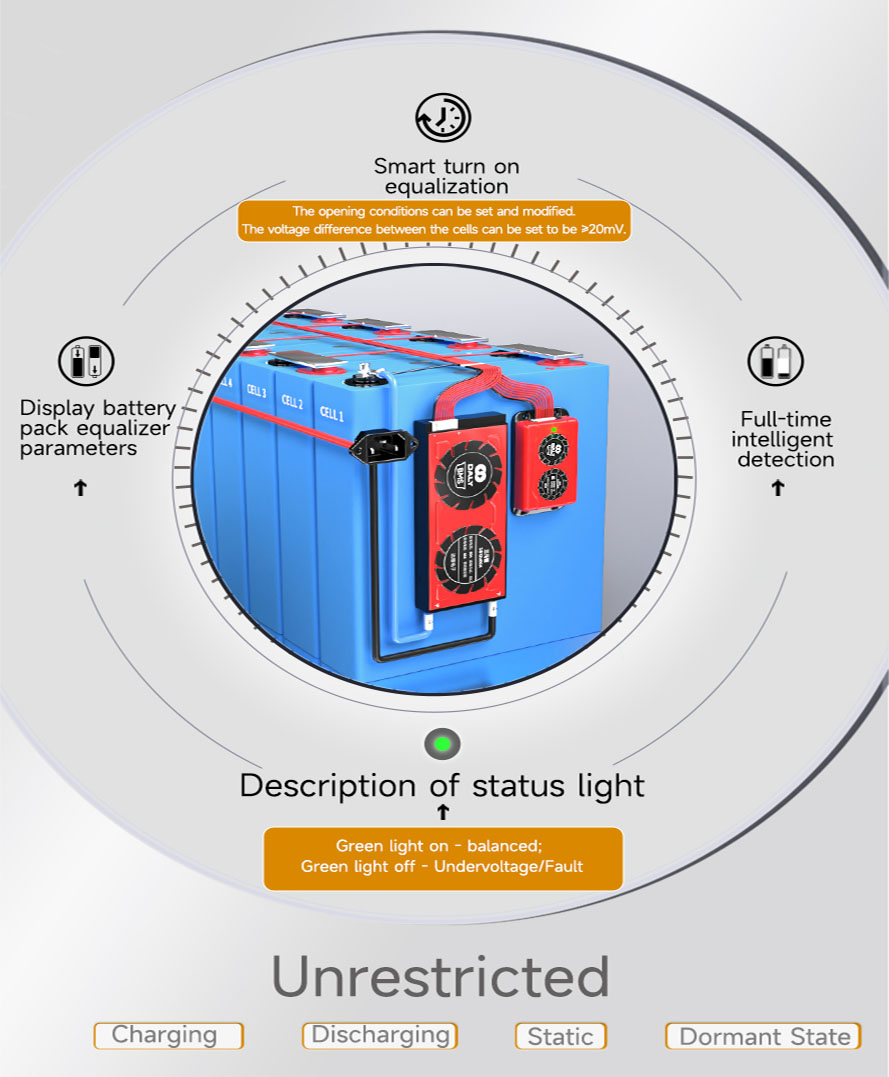At present, lithium batteries are more and more widely used in various digital devices such as notebooks, digital cameras, and digital video cameras. In addition, they also have broad prospects in automobiles, mobile base stations, and energy storage power stations. In this case, the use of batteries no longer appears alone as in mobile phones, but more in the form of series or parallel battery packs.
The capacity and life of the battery pack are not only related to each single battery, but also related to the consistency between each battery. Poor consistency will greatly drag down the performance of the battery pack. The consistency of self-discharge is an important part of the influencing factors. A battery with inconsistent self-discharge will have a large difference in SOC after a period of storage, which will greatly affect its capacity and safety.
Why does self-discharge occur?
When the battery is open, the above reaction does not occur, but the power will still decrease, which is mainly caused by the self-discharge of the battery. The main reasons for self-discharge are:
a. Internal electron leakage caused by local electron conduction of the electrolyte or other internal short circuits.
b. External electrical leakage due to poor insulation of battery seals or gaskets or insufficient resistance between external lead shells (external conductors, humidity).
c. Electrode/electrolyte reactions, such as corrosion of the anode or reduction of the cathode due to electrolyte, impurities.
d. Partial decomposition of the electrode active material.
e. Passivation of electrodes due to decomposition products (insolubles and adsorbed gases).
f. The electrode is mechanically worn or the resistance between the electrode and the current collector becomes larger.
Influence of self-discharge
Self-discharge leads to capacity drop during storage. Several typical problems caused by excessive self-discharge:
1. The car has been parked for too long and cannot be started;
2. Before the battery is put into storage, the voltage and other things are normal, and it is found that the voltage is low or even zero when it is shipped;
3. In summer, if the car GPS is placed on the car, the power or usage time will be obviously insufficient after a period of time, even with the battery bulging
Self-discharge leads to increased SOC differences between batteries and reduced battery pack capacity
Due to the inconsistent self-discharge of the battery, the SOC of the battery in the battery pack will be different after storage, and the performance of the battery will decrease. Customers can often find the problem of performance degradation after receiving a battery pack that has been stored for a period of time. When the SOC difference reaches about 20%, the capacity of the combined battery is only 60%~70%.
How to solve the problem of large SOC differences caused by self-discharge?
Simply, We only need to balance the battery power and transfer the energy of the high-voltage cell to the low-voltage cell. There are currently two ways: passive balancing and active balancing
Passive equalization is to connect a balancing resistor in parallel to each battery cell. When a cell reaches an overvoltage in advance, the battery can still be charged and charge other low-voltage batteries. The efficiency of this equalization method is not high, and the energy lost is lost in the form of heat. The equalization must be carried out in the charging mode, and the equalization current is generally 30mA to 100mA.
Active equalizer generally balances the battery by transferring energy and transfers the energy of the cells with excessive voltage to some cells with low voltage. This equalization method has high efficiency and can be equalized in both charge and discharge states. Its equalization current is dozens of times larger than the passive equalization current, generally between 1A-10A.
Post time: Jun-17-2023





